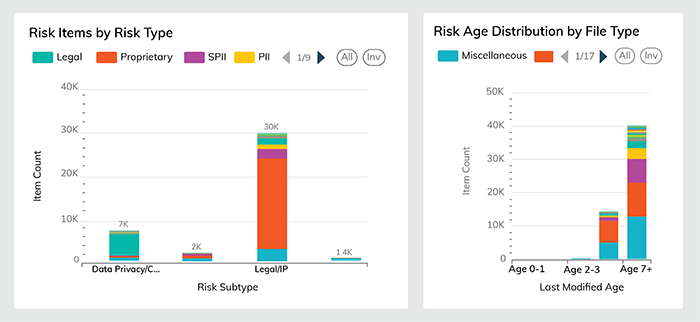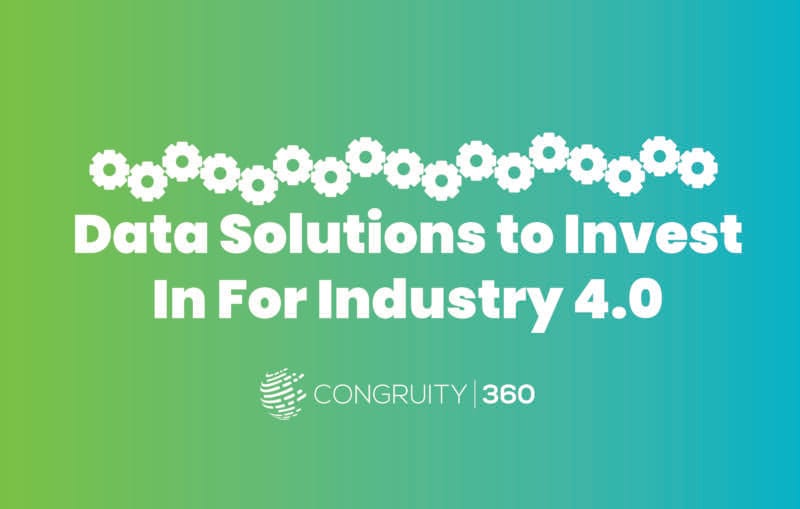Centralized Data Management
From Discovery Through Automation
Centralize data management by rapidly identifying, normalizing, and classifying data across on-prem and cloud sources – allowing you to protect data that strengthens a business and remediate the data that weakens it.
Book an Intro Call
Understand the makeup of your data landscape
Gain comprehensive visibility into your enterprise data visibility across all storage environments, from legacy systems to modern cloud platforms. Our AI-driven data classification automatically discovers and maps unstructured data, providing the foundation for effective centralized employee data management and governance policy enforcement.
Optimized storage utilization and spend
Realize the benefits of centralized master data management through intelligent data lifecycle management. Identify redundant, obsolete, and trivial data to optimize storage costs while ensuring business-critical information remains accessible and properly governed.
Improved data security posture
Strengthen your security framework through centralized data management that automatically identifies sensitive data, applies appropriate protection measures, and maintains compliance with industry regulations including NYDFS, UCPA, CTDPA, and EU BMR requirements.
Centralized, automated data management
Implement policy-based automation that enforces data governance standards consistently across your organization. Our central data management approach reduces manual effort while ensuring continuous compliance and risk mitigation.
Understand the makeup of your data landscape with rapid discovery-led analysis
Our discovery-led approach delivers comprehensive file property and content-level insights into your entire data estate, with particular focus on dark, unstructured data that often represents the greatest governance challenge. Through AI-driven data classification and metadata enrichment, you receive a detailed snapshot of your data sources that pinpoints risk exposure, redundant information, and aged data across all environments. This centralized data management capability enables strategic data leaders to establish enterprise data visibility and prioritize governance initiatives based on actual risk profiles rather than assumptions. Our data mapping and lineage tracking provide end-to-end visibility into where sensitive data resides and how it moves across your infrastructure, supporting audit readiness and regulatory compliance for frameworks including GDPR, HIPAA, CCPA, and emerging state privacy laws like CTDPA and UCPA.

End-to-end data management through discovery-led analysis

Optimized storage utilization and reduced spend
Optimize utilization of on-premises and cloud resources by identifying redundant and rarely accessed files to be deleted or moved to inexpensive cold storage, preserving prime storage tiers for relevant, frequently accessed data.
Disposing of or moving this redundant and stale data based on business rules and retention requirements eliminates unnecessary IT spend and generally reduces storage costs by 50%.
The benefits of centralized master data management extend beyond cost savings to include improved data quality and governance. By implementing a central data management system, organizations can establish clear data ownership, enforce retention policies consistently, and ensure that storage resources align with business value and compliance requirements. This approach particularly benefits centralized employee data management initiatives, where consistent classification and protection of personnel information is critical for HIPAA, NYDFS, and other regulatory compliance.
Reduced data risk profile, improved security posture
Identify and defensibly delete unnecessary data that falls outside of retention requirements, is redundant, or holds no business value to reduce your risk exposure and the size of your attack surface.
Identify PII and sensitive data and take defensible actions to remediate risk and improve security posture like moving remaining exposed risk data to secure storage, encrypting sensitive data, or tagging data for your DLP platform to optimize performance and protection.
Our integrated compliance frameworks support alignment with major regulations including GDPR, HIPAA, CCPA/CPRA, CTDPA, UCPA, NYDFS (NYCRR), and EU BMR through preconfigured and customizable compliance controls. The platform’s policy-based automation ensures that data protection measures are applied consistently across all environments, reducing the risk of compliance violations and supporting defensible data management practices that satisfy regulatory audit requirements.


Centralized, automated ongoing data management
Achieve and maintain an ongoing state of data management with precise classification, owner-driven remediation, and policy automation. Put retention policies into practice by applying workflows to both existing and newly created data to keep your environment continuously classified & compliant.
The CDM Hub empowers individual data owners across the business to make decisions about the data they own and take defensible and automated action – expediting the implementation and execution of a universal data management strategy.
Our cloud-native architecture seamlessly integrates with existing cloud and hybrid storage systems including M365, SharePoint, AWS, and Google Drive, ensuring scalability and ease of deployment across diverse environments. Real-time dashboards and reporting provide centralized, visual oversight of data posture, risk exposure, and policy compliance metrics, empowering strategic data leaders to make informed, timely decisions about their data governance initiatives. The CDM Hub represents the pinnacle of central data management, enabling distributed data ownership while maintaining centralized governance standards. This approach ensures that the benefits of centralized master data management—including improved data quality, enhanced security, and regulatory compliance—are realized across the entire organization without creating operational bottlenecks.
Comprehensive Centralized Data Management Platform
The Congruity360 platform delivers a unified approach to centralized data management through integrated capabilities designed specifically for strategic data leaders managing complex enterprise environments:
Policy-Based Automation
Enables creation and enforcement of custom policies for data retention, defensible deletion, access control, and compliance—minimizing manual effort and human error in centralized employee data management and other critical processes.
AI-Driven Data Classification
Enhances discoverability and context by extracting and tagging metadata, supporting more accurate policy enforcement and providing the enterprise data visibility needed for effective governance.
Metadata Enrichment and Indexing
Automatically identifies and categorizes unstructured data based on sensitivity, business value, and compliance requirements—enabling precise governance and risk reduction across your central data management system.
Data Mapping and Lineage Tracking
Provides end-to-end visibility into where sensitive data resides and how it moves across environments, improving audit readiness and accountability for regulations including GDPR, HIPAA, CCPA, CTDPA, UCPA, NYDFS, and EU BMR.
Integrated Compliance Frameworks
Supports alignment with major regulations through preconfigured and customizable compliance controls, ensuring your central data management approach meets evolving regulatory requirements.
Real-Time Dashboard Reporting
Offers centralized, visual oversight of data posture, risk exposure, and policy compliance metrics—empowering teams to realize the full benefits of centralized master data management through informed decision-making.
End-to-end data management through discovery-led analysis

Centralize data management by rapidly identifying, normalizing, and classifying data across on-prem and cloud sources. The CDM Hub within our platform allows data owners to take defensible and automated action on their data, yielding true ongoing data management. Continuous classification brings real-time intelligence to every business decision.
Leverage the Classify360 platform’s autodiscover capabilities to quickly identify file and folders at the source for analysis & classification.
Leverage the Classify360 platform’s reporting to analyze file and folder-level properties to classify:
- Risk indicators
- Stale files
- Obsolete files
- Trivial files
- Redundant files
Classify enterprise data according to shared business qualities or characteristics via content-level machine learning, uncovering data strengths and exposing data weaknesses through simple classification workflows, including:
- Document-level training
- Compliance risk
- Industry risk
- Corporate risk
- Sensitive personally identifiable information (SPII)
- Duplicate analysis
Reinvent data management with the CDM Hub, which gives data owners throughout the business the ability to make decisions about the data they own. Leverage built-in workflows that support business drivers like privacy regulations, industry guidelines, and common retention policy timelines.
Remediate classified data to ensure it’s properly protected, optimally stored, and most effectively serving the business by executing the following defensible actions:
- Delete
- Inject
- Tag
- Encrypt
- Archive
- Preserve
- Migrate
Your business requirements drive the automation schedule for processing, analyzing, and actioning cycles. Consider this your “easy button” for defensible policy automation.
Healthcare
Data Management Success Story
Following a breach, this national healthcare organization leveraged data classification to identify & remediate risk within unstructured data and launch an ongoing data management & governance strategy to meet compliance mandates.




